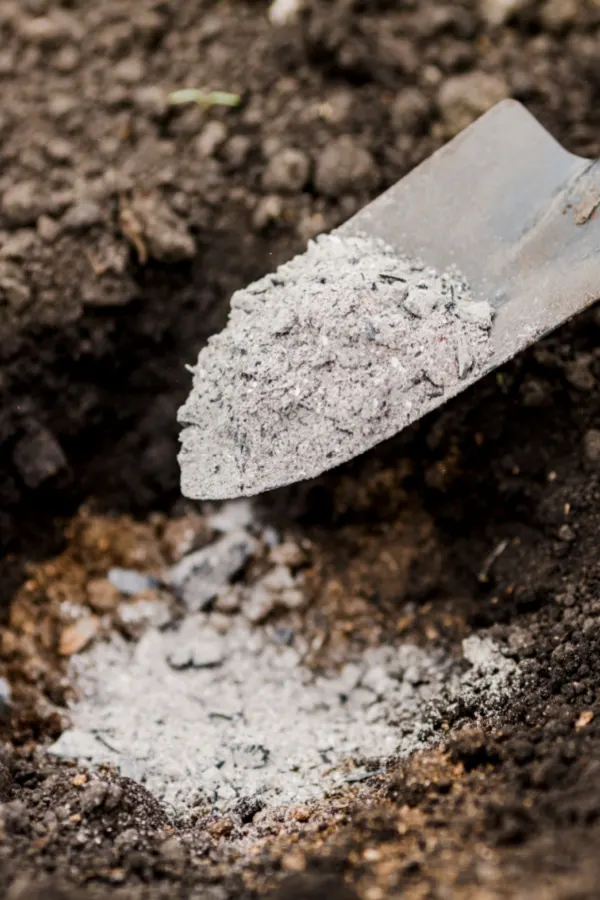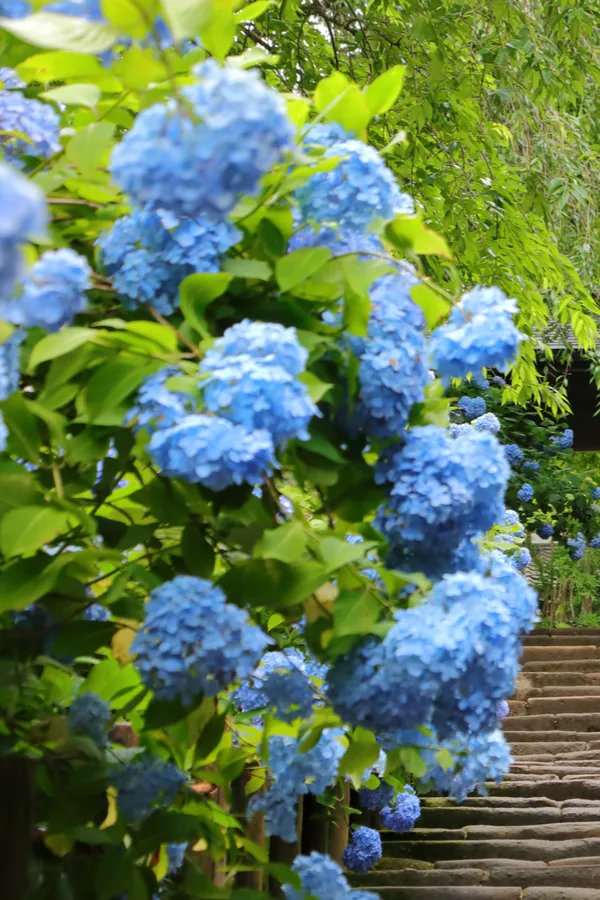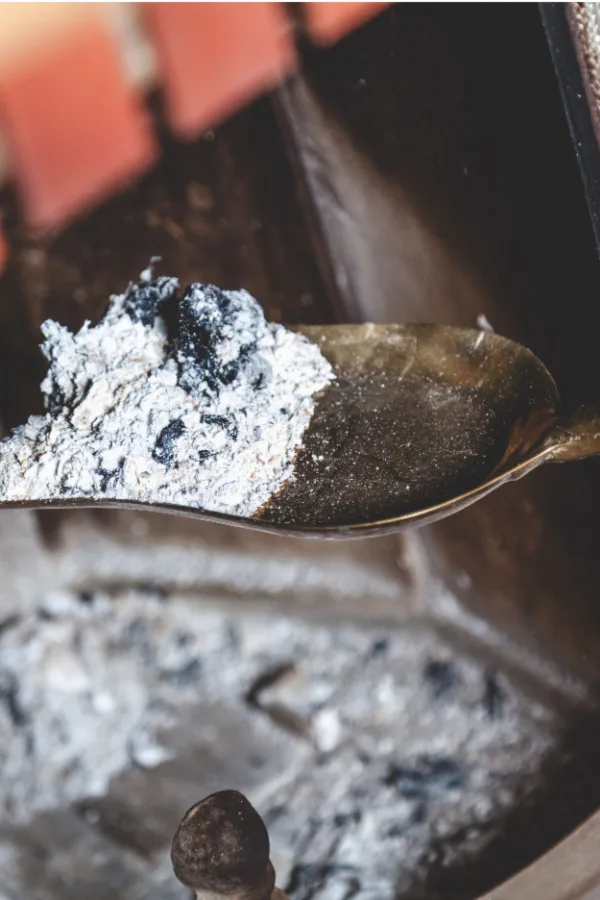Did you know that all of those wood ashes coming from your fireplace in the fall and winter can be a huge help to your vegetable garden? And that it can also help many of the other plants and flowers in your landscape as well?
It’s true! Not only can wood ash help to improve and re-energize garden soil, it can also be used to help power some of the crops vegetable gardeners love to grow most – including tomatoes, zucchini, garlic, asparagus, lettuce and more.
But even better, the benefits of wood ash can go far beyond just the vegetable garden. As it turns out, those leftover ashes are also great for adding to compost piles. And they can also help some of your flowering annuals bloom bigger and brighter too. You can even use ashes to change the color of your flowering hydrangeas!
With all of those benefits in mind – here is a look at where and when to use wood ashes to power your garden and plants, along with a few plants and places it’s best to keep them away from.
How To Use Wood Ashes To Help Your Vegetable Garden
Scattering Ashes Over Your Garden
Wood ashes can be great for helping to re-energize the tired soil in your garden. And one of the easiest ways to use them is to simply scatter the ashes lightly on the surface of the soil over the course of the winter.
Vegetable plants take a heavy toll on a soil’s fertility. Tomatoes, corn, peppers and other common crops are heavy feeders from the soil. As they grow, they soak up loads of potassium, phosphorous, calcium and magnesium.
Unfortunately, by the end of the growing season, the soil can be nearly depleted of these key ingredients. But the good news is that the ashes from wood happen to contain a fair amount of all of those key nutrients. Especially when it comes to potassium, which is of major importance to vegetable plants.
Replacing Key Soil Nutrients With Ashes – How To Use Wood Ashes To Help Your Vegetable Garden
Potassium (potash) helps vegetable plants take in water and nutrients as they grow. It is also a major player in driving photosynthesis, which helps plants convert sunlight into energy.
Wood ashes are actually loaded with potassium (potash). In fact, potash comprises about 5% of the total makeup of ashes. Even better, those same ashes also contain around 2% phosphorous and calcium, and 1% magnesium as well – which all help with plant health, bloom production and vitality.
By simply scattering ashes lightly over the soil, you can help to replace all of those key soil needs. And all for free! One thing is for sure, it can seriously cut down on the need for artificial fertilizers throughout the growing season.
It is important to note that wood ashes do not contain nitrogen. Nitrogen, of course, is also another key nutrient for plants. But that is exactly where compost and compost tea can come to rescue during the growing season! See: How To Make Compost Tea With Ease – And How To Use It Like A Pro!
How To Scatter Wood Ashes On Your Vegetable Garden
When scattering wood ashes on your garden soil, know that they can increase the overall pH of a soil if used too heavily. This can actually be beneficial if your soil leans toward the acidic side. Spreading wood ashes more heavily in acidic soils is a great low cost replacement for having to use lime.

If, however, your soil is more toward neutral, as long as you use wood ashes in moderation, there is little worry of changing its pH. For best results, in neutral or near-neutral average soils, spread 2 to 3 pounds of wood ashes for 250 square feet of garden soil.
If your soil happens to be on the acidic side and you are trying to raise the pH, double or triple the amount of ashes to 4 to 6 pounds for every 250 square feet. Whenever you scatter ash on top of soil, it is always best to water it down to avoid it from blowing away.
On that note of blowing ash – always wear gloves and eye protection for protection when scattering ash. And if you don’t know what your soil acidity is, an inexpensive soil pH instant read meter is a great way to find out! Affiliate Link : Instant Read pH Meter
Using Ashes On Specific Vegetable Plants – How To Use Wood Ashes To Help Your Vegetable Garden
You can also save back some of your fireplace ashes this winter to use during the growing season. Much as ash adds nutrients to recharge the soil, it can also provide fast nutrients to plants as they grow.
This can be done by side dressing plants with ash, or by putting ash in the planting holes of transplants. For tomatoes, peppers, cucumbers and zucchini, place a cup of ashes into each planting hole.
The added phosphorous, calcium and potash can help spur early growth. For tomatoes and peppers, the calcium can also be critical in helping the plant avoid blossom end rot. You can also lightly sprinkle ashes on top of the soil as a side dressing for lettuce, kale and all greens. Just sprinkle enough to dust the ground around the plants as they grow!

When it comes to flowering annuals in containers and flowerbeds, adding in a handful of ashes to each planting hole can give them more blooming potential and power. Both phosphorous and potassium are huge in helping form blooms – and the high content of each in wood ashes can be quite the booster!
Last but not least, you can also put a fair amount of wood ashes into your compost pile as well. Ashes add the same powerful nutrients to a compost pile as they do soil.
The key with compost piles and ashes is to add in moderation to keep the pH balance neutral. Ashes should never make up more than 10% of a pile’s overall ingredients. When adding to an existing pile, try to add two gallons of ashes to every cubic yard of additional material.
Plants & Places To Avoid Using Wood Ash – How To Use Wood Ashes To Help Your Vegetable Garden
There are some plants, trees and bushes that you will want to avoid putting wood ashes on or near. In some cases, it’s because ashes can make it promote disease and issues for plants. In other cases, it’s because ashes can increase soil pH. That, in turn, can be harmful to any plants that love more acidic conditions.

In the vegetable garden, although they actually provide nutritional value, you should never use ashes around potato plants. Unfortunately, ashes around potato plants increase the chance of potato scab forming on plants.
Because wood ashes raise soil pH, you should also never use them around acid-loving plants. Do not use ashes around pine trees, azaleas, blueberry bushes and other plants that thrive on acidic soil.
Here is to using wood ashes to power your vegetable garden and plants this year – for free! Happy Gardening – Jim and Mary
Contact Us
Jim and Mary Competti have been writing gardening, DIY and recipe articles and books for over 15 years from their 46 acre Ohio farm. The two are frequent speakers on all things gardening and love to travel in their spare time.
As always, feel free to email us at thefarm@owgarden.com with comments, questions, or to simply say hello! You can sign up for our free email list in the subscribe now box in the middle of this article. Follow us on Facebook here : OWG Facebook. This article may contain affiliate links.


